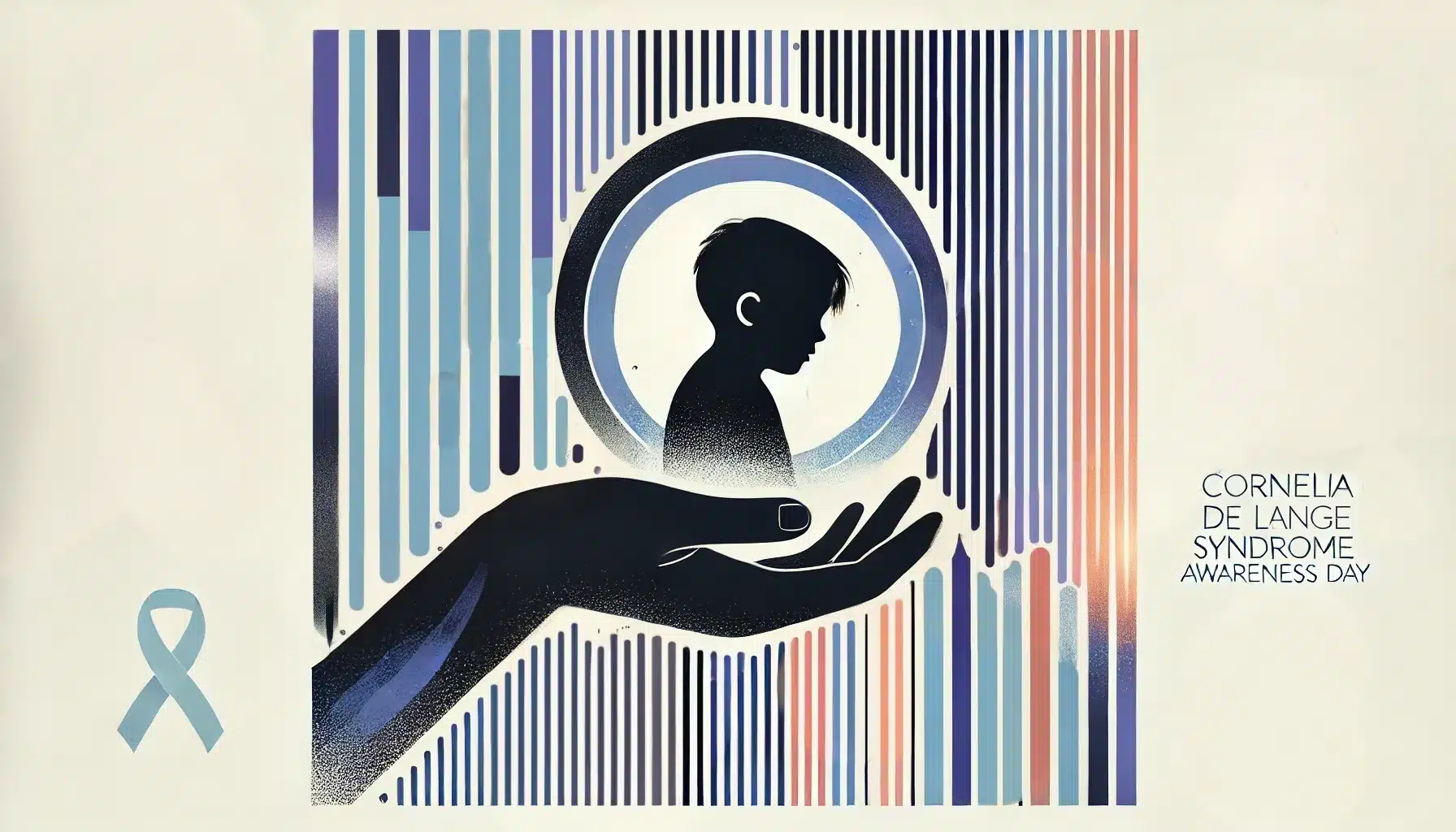What is Cornelia de Lange Syndrome Awareness Day?
Cornelia de Lange Syndrome (CdLS) Awareness Day is observed annually on the second Saturday of May to increase understanding and recognition of CdLS, a rare genetic disorder that affects multiple parts of the body. This day aims to educate the public, support individuals and families impacted by the syndrome, and promote research efforts to improve care and treatment.
Cornelia de Lange Syndrome is a developmental disorder that affects growth, physical features, and intellectual development. It is caused by mutations in specific genes responsible for cell communication and development. People with CdLS often have distinct facial features, including arched eyebrows, long eyelashes, a small upturned nose, and a thin upper lip. Many individuals also experience limb abnormalities, such as missing fingers or shortened arms, as well as medical complications affecting the digestive system, heart, and respiratory function. Intellectual disability is common, ranging from mild to severe, along with challenges in speech and behavior. Because CdLS symptoms can vary widely, early diagnosis and medical intervention are essential for improving quality of life.
History and Origin
CdLS Awareness Day was first established in 1989 to bring attention to this often-misunderstood condition. Families, medical professionals, and advocacy groups came together to promote awareness and improve access to resources for those affected. Over time, the event has grown into a global movement, encouraging more research, better medical care, and increased support for families.
While CdLS remains a rare disorder, affecting approximately 1 in 10,000 to 30,000 births, awareness efforts have contributed to earlier diagnoses and better medical management. Research into the genetic causes of CdLS has also helped develop targeted therapies and improved care strategies.
Who Participates in CdLS Awareness Day?
- Families and individuals affected by CdLS: Engage in community events, share personal stories, and connect with support networks.
- Healthcare professionals: Participate in educational programs to enhance early diagnosis and intervention strategies.
- Advocacy organizations: Host events, disseminate information, and collaborate on research initiatives.
- General public: Attend awareness events, support fundraising efforts, and promote inclusivity.
- Researchers and scientists: Conduct studies to better understand CdLS and develop new treatment approaches.
Slogans and Themes
CdLS Awareness Day emphasizes themes of understanding, support, and advocacy. The messages focus on increasing knowledge, promoting inclusivity, and highlighting the resilience of those living with CdLS.
Popular slogans include “Embracing Differences, Celebrating Lives” and “Awareness Brings Hope.” Other messages encourage community support, early diagnosis, and increased research efforts.
Colors, Symbols, and Patterns
Colors
- Teal: Represents awareness and support for CdLS.
- White: Symbolizes hope and unity.
- Purple: Reflects compassion and commitment to the cause.
Symbols
- Butterfly: Signifies transformation and hope.
- Ribbon: Represents awareness and solidarity.
- Heart: Emphasizes love and support for those affected.
Patterns
- Interlocking circles: Illustrate community and interconnectedness.
- Waves: Represent the ups and downs experienced by individuals with CdLS.
- Puzzle pieces: Symbolize the complexity and uniqueness of each individual’s journey.
Most Used Hashtags
- #CdLSAwarenessDay
- #CorneliaDeLangeSyndrome
- #EmbraceDifferences
- #SupportCdLSFamilies
- #HopeForCdLS
How to Celebrate CdLS Awareness Day
- Educate yourself and others: Learn about CdLS and share information to raise awareness.
- Participate in fundraising events: Support walks, runs, or other activities that raise funds for research and support services.
- Wear teal: Don teal clothing or accessories to show solidarity and spark conversations.
- Use social media: Share facts, personal stories, and event information using official hashtags.
- Advocate for proclamations: Encourage local governments to officially recognize CdLS Awareness Day.
Why is CdLS Awareness Day Important?
Cornelia de Lange Syndrome is a complex condition that presents unique challenges for individuals and their families. Many people have never heard of CdLS, leading to delays in diagnosis and difficulties accessing proper medical care. Awareness is critical for ensuring early intervention, which can improve long-term health outcomes.
This day also provides an opportunity for families to connect, share experiences, and find support within the CdLS community. Increased awareness leads to better understanding, acceptance, and inclusion of individuals with CdLS in schools, workplaces, and society.
raising awareness supports scientific research into the causes and treatments of CdLS. By educating the public and advocating for funding, awareness efforts contribute to advancements that can improve the lives of those affected by the syndrome.
Features
- Health
